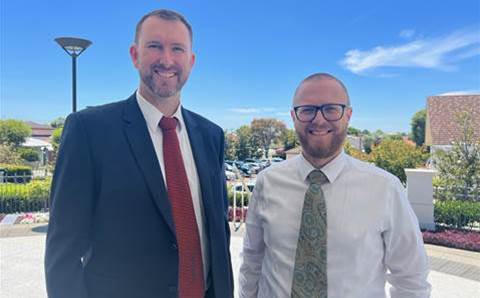Why the field service industry MUST innovate and share more risk with partners

Despite everyone agreeing it has to happen, the much vaunted and all-promising ‘as a service’ model continues to be an elusive nirvana for many technology business owners in today’s partner community.
At a strategic level, it’s the evolution in valuation models and a distinct change in what end customers expect products and services to look like – and the way in which they want to consume them – that’s driving the change.
But don’t just take our word for it. A 2018 Accenture survey of some 1250 c-suite executives found that 78 percent agree that current business models will be unrecognisable in just five short years, with ecosystems being the main change agent.
The fact of the matter is, that whether we embrace it or not, a new ecosystem will emerge if we don’t deliver what’s required. And if you’re still in doubt about what that could mean for your business, just ask Blockbuster, Kodak, the taxi or hotel industries how well their strategy of being resistant to change worked out.
It’s been coming for a while
Let’s be clear. This change has been on the horizon for a long time now. In fact, cloud and ‘as a service’ was a concept first hatched in its modern incarnation by Microsoft some 10 years ago which, in technology terms, makes it almost pre-historic.

Indeed, Microsoft was one of the first to break the mould with a single, upfront licence cost being
replaced by an ‘as a service’ model component with the forerunner to Office 365.
Software vendors have been the most active in leading this inevitable march, and some hardware vendors’ products – such as HPE’s Greenlake – have surely risen to the challenge. But where is the partner left in all this?
More than a financial cost
Partners with solid balance sheets can afford to turn capex and support into an ‘as a service’ model.
However, they carry all the risk. Others struggle to ‘swallow the fish’ of upfront costs and the huge risks involved.

The vendor can assist with financing for the services element of such a transformation, allowing the partner to ease cashflow but pay the penalty for carrying the extra liability on their balance sheet. It’s far from ideal because this in turn effects valuation, credit rating and, ultimately, constrains their ability to scale their solution without the vendor.
Or it can mean their finance arm being the prime underwriter of the contract and them ultimately owning the financial relationship with the customer.
The reality is that the time has come for change. And not just any change, profound change.
Step up and be counted
The field services industry must create a new ecosystem focused on building value for the partner.
In addition, more innovation needs to be provided to support our partners’ success and create a
solution that they’re seen to own, not the vendor – who could disintermediate the partner at the end of the agreement. What’s more, if the partner is the entity providing the solution, they’re who is seen as providing the value to the end customer. It’s certainly food for thought.

Commercial models also need to be created that recognise the long-term value of a solution lifecycle.
They need to support solutions that are available as a simple monthly charge to mirror a partner’s ideal commercial model, enabling the partner to win more business. It’s a win all round because operating in this way will help everyone’s valuations.
Billing too, needs work. Billing must become ‘cloud like’ with easy to snap-in contracts that are more than just a bog-standard finance agreement in disguise. Their structure should add value, not be merely functional.
And let’s not forget costs. They need to be simple, repeatable, predictable and scalable.
The entire ‘field service supply chain’ needs to be available on an ‘as a service’ basis – either as a complete solution or as a completely unbundled set of products. Whichever way you go, it must be available for a reasonable monthly charge.
So, the bigger picture is that for the new ecosystem to work, the emphasis really needs to be on
delivering a frictionless customer experience. That’s the key to it. Without such disruptive and
innovative thinking, the partner community – which, after all, is essential to the success of our IT
community – will struggle to maintain relevance and value to the end customer beyond simply offering a nice set of skills or a vendor-led product set. We simply can’t let that happen, so the time to act is now.
John McVicker is founder and managing director of Best Technology Solutions.












